Alumni Weekend 2016
Here are a few photos from the 2016 Alumni Weekend, held in April. For information about the event, see the Alumni Bulletin Board.
—Photos by Carlos Puma
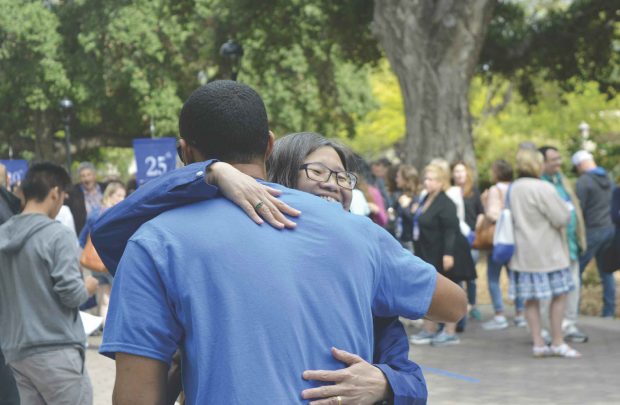
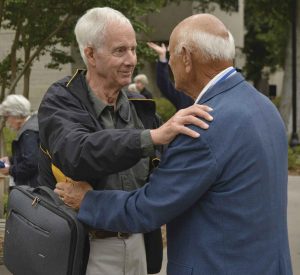
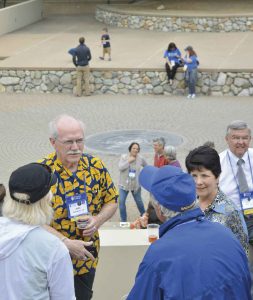

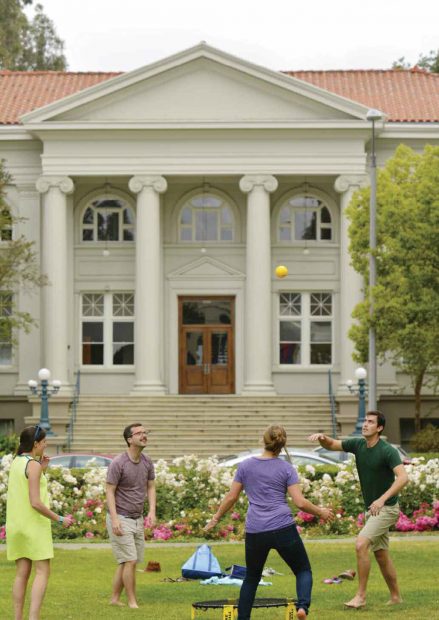
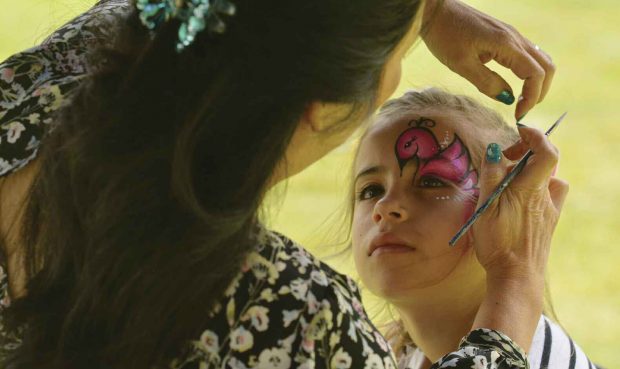
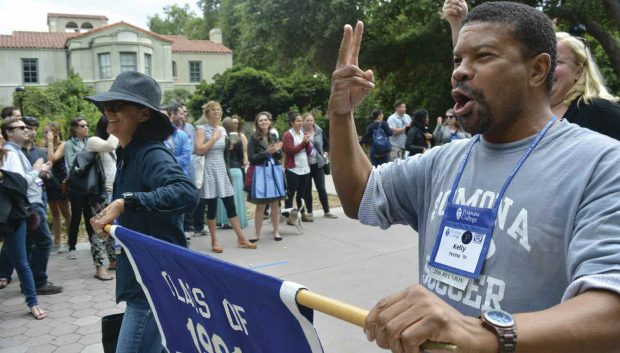
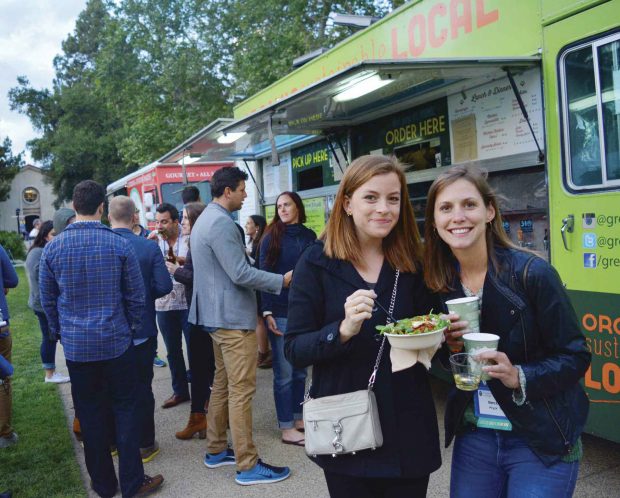
Alumni Weekend 2016
Here are a few photos from the 2016 Alumni Weekend, held in April. For information about the event, see the Alumni Bulletin Board.
—Photos by Carlos Puma








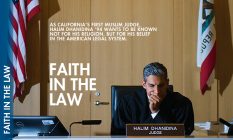
THE STORY WAS in the works for weeks. The Los Angeles Times was preparing a front-page profile of California’s first Muslim judge, Halim Dhanidina ’94. And the paper was carefully vetting its subject, checking his background as the son of Indian immigrants, interviewing former colleagues in the D.A.’s office, and watching him preside over criminal proceedings at the L.A. County Superior Court in Long Beach.
After three months, the judge remembers getting a call from the reporter with some bad news. Editors were considering killing the story. The reason: “We’re not finding anything controversial.”
In the end, the paper ran the article after all. As far as the judge was concerned, the only thing controversial was the headline, which he called “almost inflammatory.” It read: Faith Leads State’s First Islamic Judge to the Bench.
Though modified online, the printed headline played into the worst preconceptions about Muslims that Dhanidina had been battling since his student days at Pomona College. He thought the wording portrayed him as a zealot who would impose sharia law from the bench. Which is exactly what anti-Muslim critics warned against, at websites with names like Jihad Watch and Creeping Sharia. Some wondered whether a Muslim judge in “Caliph-ornia” could be impartial when sentencing “jihadis, honor killers and those who assault non-believers.”
“If you’re going to ask me about sharia law, you’re going to be misled, because I don’t know anything about it,” said the judge during an interview at his tidy courthouse office, decorated with cheerful artwork from his two children. “I’m an American that works in the American legal system. You can ask me anything about that and I’ll give you a better answer.”
Dhanidina, who holds a law degree from UCLA, has been answering questions about Islam and the law since that day in 2012 when Gov. Jerry Brown announced his ascension to the bench as a milestone for Muslims. Dhanidina, just 39 at the time, says his religion had never been a defining issue in his career until then. During his 14 years as a deputy district attorney in Los Angeles, prosecuting gang-related murder cases, many colleagues didn’t even know he was a Muslim.
Though he felt awkward at first, Dhanidina now embraces his high-profile role as a public figure from his community. Yes, he worries that carrying a religious banner may detract from his accomplishments. He wants to be recognized for his public work, not his private beliefs. Yet he believes the focus on his faith serves a purpose, because it makes him “a symbol of inclusion.”
“Part of the value of diversity is for people to know about it,” says the judge, who often speaks at schools and on professional panels. “The role of Muslims in American society right now is very tenuous. There are efforts to make Muslims feel they’re not welcome in the U.S., that they don’t belong here, that they should not be allowed to come, to stay, to participate in institutions.”
For fellow Muslims, seeing his success proves the opposite: “There is a place for you, too.”
The judge also believes that his public visibility can help change perceptions among non-Muslims, many of whom get their impressions about Islam from the media or the Internet. It’s easy to believe in stereotypes about a group, he notes, when you don’t personally know any of its members. “That’s why Muslims in the public eye need to be open,” he says, “because it helps to demystify this idea of what ‘these people’ are like.”
Of course, Dhanidina’s work as a judge is an open book. His court is open to the public; his rulings are public record. That helps dispel any suspicions that he may be somehow secretly imposing his personal ideology on the court.
“People think that if you’re a Muslim, you believe in chopping off heads and oppressing women,” he says. “But it’s very easy to say what a Muslim would be like as a judge if there aren’t any Muslim judges. Well, now there is one here in California. So if anybody wants to know what a Muslim would do as a judge in an American court, they would come to Department Eight of the Long Beach Superior Court and see for themselves.”
PRESIDING IN COURT one recent afternoon, Judge Dhanidina displayed a carefully studied judicial demeanor. He begins every day with a formal flag salute, “in respect of the rights we enjoy.” On the bench, he is disciplined, efficient and formal, almost courtly. With defendants, he is respectful and encouraging, telling one who presented a good probation report to “keep up the good work.” And throughout, he maintains perfect posture in a robe that looks tailored to his fit, six-foot-one frame.
His goal is to run a courtroom “with dignity and decorum,” he says, where justice prevails and everybody feels they are treated fairly. “They would never know they were in the Muslim guy’s court,” he adds, “unless somebody told them.”
Outside the hallowed halls, the judge lets his hair down. An easy smile softens the slightly severe look of his gray goatee, precisely manicured along the ridge of his chin. He is friendly and chatty with a group of students from his daughter’s elementary school, visiting on a field trip. “You were awesome in the musical,” he says to one. “Are you playing softball in the fall?” he asks another.
“I want the young people to feel I’m just a regular guy,” says the judge, because it sends a message that they can make it too.
In many ways, he is a regular guy. Softball coach, loyal Cubs fan, aficionado of Spanish rock, dad who drives his kids to school. But Dhanidina also is driven to excel, to be the best in whatever he does. He attributes his competitive streak to his immigrant parents, who always strived to succeed.
“When you meet Halim, or appear before him, what strikes you is not his faith, but that he’s such a smart, hardworking judge,” says Long Beach Supervising Judge Michael Vicencia. “So whatever kind of preconceived notions people may have had, the second they meet him all of that goes away because you’re so impressed by what a good judge he is.”
So far, nobody has formally complained about Dhanidina’s performance, says Vicencia, who fields complaints against judges in Long Beach. And nobody has raised concerns about his religion either.
At his swearing-in, Dhanidina assiduously sidestepped a potential public controversy, avoiding the brouhaha that erupted in Brooklyn last year when a fellow Muslim judge swore her oath on the Quran. Instead, he chose not to swear on any holy book, dismissing the issue as irrelevant.
For a judge with such an even temper, though, it’s surprising to hear Dhanidina admit that he is “certainly sensitive to slights.” When the governor’s office received hate mail in response to his appointment, he acknowledges matter-of-factly that “it hurt my feelings.”
Dhanidina, who won election to his first full term in 2014, doesn’t consider himself a victim who harbors grievances. But he has experienced his share of prejudice in the past. Like the dinner-party guest openly expressing anti-Muslim sentiments. Or the thoughtless coworker using the pejorative term “towelhead.”
Then there was the defense attorney who once tried to save a murderer from the death penalty with a thinly disguised appeal to religious prejudice. Dhanidina was the prosecutor at the time and had won convictions for the double homicide. In the penalty phase, the opposing lawyer argued that the jury should show mercy consistent with “our” Judeo-Christian values, not like those of the prosecutor who follows “different” traditions.
The strategy failed, but Dhanidina never forgave the judge in that 2008 case for not stepping in to stop it. “The argument itself didn’t hurt me,” he says, “but the fact that the judge did not officially stamp it as inappropriate, that stung more.” Later, when he faced the same lawyer again in a different case with a different judge, Dhanidina made a preemptive strike, asking the court to prohibit him from making the same offensive argument. The judge agreed, admonishing the defense lawyer, “If this is not an appeal to prejudice, explain to me what it is.”
“That was a very gratifying moment for me,” concludes Dhanidina, “because OK, somebody else has acknowledged that this isn’t right.”
IT’S OBVIOUS, SAYS DHANIDINA that animosity toward Muslims has worsened in the quarter century since he worked for better interfaith relations as a student at Pomona. The terrorist attacks of 911 and subsequent Middle East wars have stoked public fears about the perceived connection between Islam and violence. The judge blames both sides: the terrorists, for cloaking themselves in a distorted reading of Islam, and self-serving politicians, for exploiting the violence to scapegoat an entire religion.
“It’s baffling to Muslim people like myself, and millions around the world, who have never seen any kind of doctrinal link between violence and their religion,” he says. “We don’t understand how other people can make that connection.”
Less than a month after the interview, the issue of Islam and violence was back in the news in a shocking way. In the worst mass shooting in modern U.S. history, a gunman vowing allegiance to Islamic terrorist groups massacred 49 people at a nightclub in Orlando, Florida. Since many of the victims were gay, the case also refocused attention on the treatment of homosexuals in Islamic countries, including a handful where homosexuality is punishable by death.
The issue is not new to Dhanidina. Even fellow Muslims have asked him how he can reconcile legal issues such as gay marriage with traditional Islam. Asked another way, can a Muslim judge be fair to homosexuals?
Coincidentally, Dhanidina had already addressed that question in a controversial case watched closely by gay rights advocates. The case involved a police sting that led to charges against a 50-year-old man for lewd conduct and indecent exposure in a public park. In a blistering, 17-page ruling handed down in April, Dhanidina blasted the Long Beach Police Department and local prosecutors for what he called an “arbitrary enforcement of the law” that specifically targeted gay men. The judge found that police “harbored animus toward homosexuals” and that the prosecution was fueled by “the rhetoric of homophobia.”
“When I think of what values are important in a society, equality is right at the top,” the judge says. “That’s probably because I’ve never been in a majority. Of anything. Anywhere.”
DHANIDINA BELONGS TO the Ismaili religious community, a historically persecuted offshoot of the Shia branch of Islam, known for its modern, progressive views. “We don’t believe in the religious superiority of one group over another,” says Dhanidina, whose Thailand-born wife was raised Roman Catholic. “We believe that different religions are just different paths to the same place.”
His ethnic heritage traces to the Gujarati people of western India, an illustrious community that also includes independence leader Mahatma Gandhi, British actor Ben Kingsley, and Queen lead vocalist Freddie Mercury. His grandparents were born in Tanzania, part of the Indian diaspora in East Africa during British colonial rule. His parents, Lutaf and Mali, met at a Tanzanian teachers college. The couple came to the United States in the early 1960s when his father got a scholarship to Northwestern University. Eventually, most of the extended family came here too.
Born in 1972, Dhanidina was raised with his older brother in the Chicago suburb of Evanston, Illinois, where Northwestern is located. At home, language and food were a natural blend of Asian, African and Anglo-American influences. (“Growing up, I didn’t even know which word came from which language.”) He graduated from Evanston Township High School in 1990, still using the first name Al-Halim.
He arrived as a freshman at Pomona at the height of the First Gulf War, finding himself peppered with questions about Islam, “as if you were the spokesman for everybody.” At the time, he was one of literally a handful of Muslim students on all five Claremont campuses combined. “We still managed to find each other to start the Muslim Students Association,” he recalls. Initially, the group rallied around a campaign to keep dining halls open later during Ramadan, which requires fasting until after sunset. From that victory, the goals evolved, stressing education to combat stereotypes and promote better understanding.
Dhanidina, an aspiring diplomat who got a degree in international relations, knew he had come to the right school. Pomona’s diversity is what drew him here in the first place.
“I think I would not be the person I am today if I had not gone to Pomona,” says the judge, who still maintains strong friendships with a multicultural group of his freshman hall mates. “Everyone is encouraged to think big about the ways they want to make the world a better place. And I really bought into that.”
—Photos by Lori Shepler

WHEN ASKED WHAT she would save if the building were on fire, Professor of Religious Studies Zhiru Ng looks around for a moment at her office in Pearsons Hall. Like most academic offices, it is full of accumulated objects, big and small. There are two large, beautifully carved Buddhas, a hanging scroll with calligraphed
Chinese characters saying, in loose translation, “Serenity illuminates,” and a long wall of bookshelves packed with volumes and small religious items, including a painted statuette of Dizang, a figure in Buddhist mythology about whom she has written a scholarly book.
Finally she points to her bookshelf. “I think my books are very much a part of me,” she says, “because to me, meditation is learning.” But then she shrugs and smiles. “Although if there is a fire, there is a fire.”
Sentimental attachments are not a part of Ng’s world. Her world is one of transience and acceptance. Or as she would say, emptiness. Not a very heartwarming word in English, and she says it’s pretty much the same in Chinese. But for Ng, emptiness isn’t something to be avoided. It’s something to be understood and embraced, even if it takes a lifetime of meditation and study.
As an example of what she means by the word, she points to the larger of the two Buddhas, inherited along with the office from her predecessor, Professor Emerita of Religion Margaret Dornish. “Like this Buddha,” she says. “Every day it is aging and it is undergoing change, right? But we don’t see that. We see it as a fixed form. … So emptiness is not saying there is nothing, but rather that the essence of things and of our lives themselves and the events in our lives are like this Buddha. They seem to have a fixed nature, but the nature is really never, ever fixed. It is in constant change, even though the naked eye can’t see it.”
And blind faith in permanence, she believes, has serious consequences for the human condition. “I think all human beings—the way we function in life is that we assume a permanence about everything, and that is the cause and root of a lot of our suffering.”
It was these concepts—all encapsulated by the word “emptiness”—that propelled Ng from simple curiosity about Buddhist traditions to a lifetime devoted to study and contemplation. “The first dharma talk I attended was by the person who would become my religious teacher,” she recalls. “And he was talking about emptiness, which was at that time totally over and beyond my head. But I w remember, after the lecture, the friend who brought me there asked me, ‘So how was it?’ And I said, ‘I don’t quite understand it, but I’m very sure this is it, and this is something that I am going to pursue in life, and that someday, I’m going to understand this emptiness, and that will change my life.’”
GROWING UP IN SINGAPORE as a child of Chinese immigrants, Ng thought of Christianity as the religion of the educated, but personally, she found it too harsh and too culturally strange to be attractive. Her mother and grandmother, on the other hand, practiced a form of popular Chinese Buddhism known as Pure Land Buddhism that the skeptical young Ng dismissed as naïve and superstitious.
At school, she started off in the sciences, and then won a competitive government scholarship for a special program designed to produce English teachers. There, in classes of two to five students taught by British expatriates with doctorates, she fell in love with English literature. “Literature really made me explore life,” she explains, “because in English literature, or any kind of literature, I think, you’re going to raise the question of suffering. You’re going to raise the question of the meaning of life. You also raise the question of death, and the impermanence of life always runs through all their writing. And I was struck by that, but I also felt deeply that there was never really an answer.”
Then, during her last year of high school, her grandmother died, and Ng’s life changed. “When I attended the funeral, I became enthralled by the death-and-dying rituals,” she says, “because they talk about how you will be born into what is considered a pure land, and in that pure land, you have as your parents the lotus flowers.”
That peculiar image intrigued her, partly because it seemed to signal a release from the burden of filial piety, a Chinese tradition emphasizing the deep respect and devotion children owe their parents. “Filial piety is very, very much something I was raised with,” she says. “But I always felt guilt that I never really loved my parents as much as they loved me. And so, when I participated in those rituals, my grandmother’s death rituals, and I came across those verses, I was fascinated. Because how could my parents then be lotuses? And that actually started me off on my journey.”
As she continued her English studies at the National University of Singapore, she tried to learn more about Buddhism outside the academic setting. She signed up for classes with a Buddhist monk from Taiwan and was drawn deeper and deeper into Buddhist philosophy, which spoke to her as nothing ever had before.
She says: “I found, actually, in my study of Buddhism, that this is something that holds some answers for my existential questioning as to: What is the meaning of life? Why do people suffer? And how do we respond to people suffering? … I found that teaching to be very useful, but also very hard to realize. I wanted to dedicate my life to the study of Buddhism, whatever that means. So I decided after I finished my undergraduate studies that I would become a Buddhist nun.”
Since then, she’s never looked back. “Sometimes students ask me why do I become a monastic,” she says, “because in the modern world monasticism really means you are tying yourself down. We have lots of rules and regulations. … But in early Buddhism, the idea of monasticism really means to go forth. It’s a path of liberation, in the sense that you put down things that are unnecessary baggage, and that allows you then to pursue this path. So it’s really a renunciation of certain patterns of thought. For some people like me, I guess, the monastic life is the perfect path to do that. Ideally in Buddhism, the monastic life should be an environment that really nurtures that kind of inner liberation.”
As a monastic, Ng continued on a spiritual journey that carried her from Singapore to Taiwan for her religious training, and then, unexpectedly, to the United States. “Originally I imagined that I would be going to maybe India or to Sri Lanka to study after my religious training, but my teacher actually was very specific. He really wanted me to come to the States.”
At the University of Michigan, she studied Indian Buddhism in the canonical languages of Sanskrit and Tibetan. Then she completed her doctoral studies at the University of Arizona, focusing on Chinese and Japanese Buddhism. In 2000, she joined Pomona’s religious studies faculty to replace the retiring Professor Dornish.
TODAY, STRIDING ACROSS the Quad or standing in front of a seminar class, Ng cuts a striking figure. With her tightly cropped hair and purple-gray monastic robes, she has become a familiar if somewhat singular presence on campus. Her classes—such as Worlds of Buddhism, Life Story of the Buddha, Religious Traditions of China, and the Lotus Sutra in East Asia—attract a wide range of students, from religious studies majors connecting the dots between world religions to Asian Americans hoping to get a better grasp of their cultural heritage to religious seekers searching for spiritual clues in Eastern thought.
“My colleagues say that they probably have fewer seekers than I do,” she says, “and I think that has to do with the way Buddhism is portrayed and understood in American culture, in the sense that Buddhism is often seen as a religion that’s less institutionalized, a personal religion, something that you could actually pick and choose from.”
But despite her evident dedication to her religious order, Ng isn’t trying to convert anyone. Buddhism, she says, is not that kind of religion. “Buddhism is really about epistemology,” she explains, “in the sense that you’re trying to unlearn how you know the world and coming up with a different way of experiencing knowing the world that involves internal transformation. I always tell my students that we wear contact lenses, but we don’t see the contact lenses, so we already have preconceived constructions of things. So it’s always very good to expose yourself to something new.”
For most of the students in her classes, those “contact lenses” are shaped by the assumptions of Western culture—assumptions about life and death, time and change that are very different from those in Buddhist thought. “Much of what I do in my courses is about unpacking these kinds of assumptions with my students so that they are aware. And I think it fits very nicely into the liberal arts setting because you are really questioning culture and questioning the way you construct knowledge, including religious knowledge.”
Indeed, at a time when many religions—from Christianity to Hinduism—are dealing with a clash between the dogmatic teachings of churches, temples and seminaries and the more irreverent, scholarly approach of religious studies programs, Ng finds that Buddhism is something of an exception. The first stage of meditation, she says, is described in Buddhist texts as “hearing”—as in hearing the teachings of the Buddhist masters—but that word was part of an oral tradition. “Now for us hearing really means reading, right?” she says. “So it means studying, in other words.”
For most of her students, this first stage of meditation—study and learning—will be as far as they go, but she believes that just wrestling with the concept of emptiness for a semester is enough to open a lot of eyes to a wider view of the world.
“When they first come across this, especially if they have never had any exposure to Asian thought, they might be a little bit perplexed,” she says. “It’s very difficult to get to the crux of it. But I think you’ll be surprised at how many of them feel that this is such a wonderful, different way of looking at things. And they enjoy the new lenses that it gives them.”
However, that is only the first step in what is, for Ng herself, a lifelong process. In Buddhist meditation, beyond hearing is contemplation, and beyond contemplation is internal transformation. That process, she says, may take a lifetime or—if you factor in the concept of rebirth—lifetimes. But Ng has no doubt that it’s worth it, not just in the end, but at every step along the way.
“It means not grasping onto anything in your life,” she says, “but accepting the fact that it is part of the impermanence, and rejoicing in the fact that there’s always that change. It’s a rejoicing that is not like happiness that brings you up and down, but it’s a rejoicing in the sense that this is life, and life itself is already enough as it is, and that it has all its miracles. And if you just open your eyes and look at this and accept the changes, you will find a lot of things that are joyous about it, and you will be much more at peace in your life.”
—Photos by Carrie Rosema
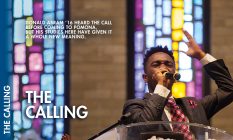

DONALD ABRAM ’16 grew up on the South Side of Chicago with a single mother and a grandmother who took him to church every Sunday, no excuses—and he tried using them all, down to not having clean socks.
Every week he would see church members joyfully worship. He never really understood what that was about even though he was an active member of the congregation. Then, on a cold December day when he was 14 years old, Abram says he heard a distinct call from God.
After coming home from school and warming himself by his space heater, Abram dozed off. In a dream, he saw himself walking down the center aisle at church, but as a celestial being, not a physical one. He looked up to the pulpit expecting to see his pastor standing there, but instead he saw himself preaching. Abram says he woke up shocked and shaken.
His father was a minister, and though Abram never lived with him, he knew the Sunday morning routine and what a preacher’s life entailed—and he wasn’t having any of it. Throughout his childhood, people had told him, “I see the call in your life,” but he says he ran from it.
Abram wanted to be a force for good—but in the form of an FBI agent, not a minister. Still, he talked to family, seeking advice and interpretation about the dream, which was now recurring. Ultimately, he had to come to grips with the vision on his own: He decided that God was in fact telling him to preach. So he went to his pastor, who decided to test him with a trial sermon. Abram preached his first sermon, and the pastor and elders confirmed that this call was a real one.
He vividly remembers one moment in the sermon when he thought: “This is what I saw in the dream. This is what I’m supposed to be doing, and I know that.”
You’ve heard of the preacher’s kid. But this was a preacher kid. All throughout high school, Abram delivered sermons at Greater New Mount Eagle Missionary Baptist Church, a black congregation. At first he mimicked his pastor, but soon he found his own rhythm and style, earning the nicknames “Fireball” and “Firecracker” for his blazing energy. Abram says he feels communion with both God and the audience when he’s in the pulpit.
“There are things that I will say and things that I will do that are not on my manuscript, and the Holy Spirit drops that down in my spirit and it comes out,” says Abram. “I am just so in tune with that moment that I know this is what I’m supposed to do—this is what I’ve been called to do.”
While growing up, Abram’s interactions were mostly with black people. His original plan was to attend the historically black Morehouse College, which Martin Luther King Jr. and Spike Lee attended—that’s where successful African American men went to school where he was from, Abram says. But when he received a Posse Foundation scholarship to Pomona, he began to rethink those plans. After researching the College, he decided to go west. Another big change was on the way.
THE DECISION TO come to Pomona was another turning point for Abram and the beginning of a four-year transformation. In the classroom, he was challenged to think of his faith more critically through courses like Professor Erin Runions’ Introduction to the Hebrew Bible. Runions’ goal is for students to approach the Scriptures as literature, from a scholarly perspective rather than a particular religious tradition. Looking at the Bible through this new lens created an inner struggle, he says.
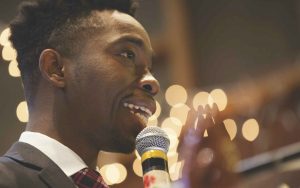 “It was incredibly difficult for me to take on a class that removed the sanctity of spirituality from the text.” says Abram. “Initially it felt really disrespectful to me. I didn’t feel like we were giving the due deference and respect.”
“It was incredibly difficult for me to take on a class that removed the sanctity of spirituality from the text.” says Abram. “Initially it felt really disrespectful to me. I didn’t feel like we were giving the due deference and respect.”
But the no-holds-barred questioning of the Bible gave him permission to reexamine his belief system. “There were a lot of questions that came up that I didn’t have the space to bring up on the South Side, with my pastor or my father,” Abram says.
The perspectives and points that Abram thought were great in the classroom ran counter to what he was taught in the church. He grappled hard with his faith, controversial texts and the ways he saw the Bible used to perpetuate injustice. In conversations, family members and his pastor noticed his worldview shifting.
As Abram’s advisor and teacher, Pomona College Politics Professor Lorn Foster witnessed that shift as well. Over time, Foster says, he saw an evolution in Abram and “a willingness to be more open about things than when he entered Pomona College. … His faith was more dogma when he entered the door.”
Abram would agree. Whereas before, he says, his spiritual practice revolved around a God that had a strict code of rules and regulations, at Pomona his perspective has widened and deepened into a recognition that the core of his belief is about relationship with Christ, not religion, he says. This ongoing faith journey is one of both reclamation and tension.
It is also a journey of relationships. On campus, he says, he encountered types of people he never had before—students from marginalized backgrounds that were markedly different from his black Chicago experience. He met undocumented students, gay students, students with mental illnesses—identities and stories that were new to him and that he felt the church he was raised in either ignored or was blind to. Over time, Abram became concerned not just about God but also about God’s politics, as he understood them. Another call began to stir in his heart.
Through his analysis of biblical texts, readings on black liberation theology, and his relationships with other students, Abram says he began to see Jesus not only as a spiritual savior but also as a revolutionary figure—an advocate for the poor and those on the fringes, who upended traditional religious institutions and whose central message was one of unconditional love. Religious leaders in that day were also government figures, and Jesus pushed back, Abram says. He points to the story of Jesus turning over tables in the temple in anger as a profoundly political act. “You could call it a protest. You could call it a sit-in. You can really call it an act of rebellion in many ways to a system that keeps [down] those in society who are viewed as less than or who are viewed as different or not as valued. And he is saying, ‘This system has to come down. This system has to stop. Because what you’re doing now on a very micro level is taking advantage of people.’”
NOW RELIGION AND POLITICS have become one and the same for Abram. Yes, his call was a personal transformation, but he was also called to transform institutions and systems of injustice, the politics major says.
Whenever he returns to his home church sanctuary, he preaches a message on how life in the pew and life in the public square are inextricably intertwined. In his sermons he is subtle, but intentional and strategic in weaving in his politicization, Abram says, and the response has been overwhelmingly positive as he offers critiques of materialism and urges congregants to fight for the most vulnerable in society. “I think the church is not able to see those connections because we focus on abortion, gay marriage or passing out Thanksgiving dinners,” says Abram. “We’re not focused on structural change.”
Abram points to inequities in the criminal justice system, massive wealth disparities and the behavior of Wall Street investors—and he believes the most effective ways to combat those inequities are through policy and government as well as a mobilized church. “Christ has called you to condemn that which is wrong,” and Abram believes the church writ large has missed some of what he sees now as obvious sins.
Along the way, Abram has become a fierce advocate for the Black Lives Matter movement, which he believes is “an indictment of the black church.” Of course, he says, the black church has held a key role in the civil rights struggles of the past. But on other issues the church has been silent at best.
“Black Lives Matter is actually doing what Jesus did. Not only are they saying, ‘We’re combating white supremacy.’ They are combating misogyny, transphobia, homophobia, discrimination against those who are differently abled,” says Abram. “I think Black Lives Matter has hit at the root of what it is Christ has called us to fight against but also the root of what the church has failed to address.”
Abram has held two internships in Washington, D.C.—one at the Center for American Progress and another with Joshua DuBois, formerly the head of the Obama administration’s Office of Faith-Based and Neighborhood Partnerships. He remains hopeful that change will happen both in the church and in public policy.
In the fall, he will attend Harvard Divinity School for a master’s of divinity degree. He may also pursue a master’s in public policy. Inspired by DuBois’s work, Abram wants to start a faith-based consulting firm, advising government, businesses and political campaigns. He says he may even run for public office someday.
“Jesus came as a liberator. Therefore in all that we do, we should do it in the name of liberation. And we should do that with conviction, with power and with strategy. … I want to be in a position where my faith is central to policies or advice that I give so that it can be impactful and beneficial for those that are most marginalized in our society.”
And preaching?
“I will continue to preach. I will always be a preacher.”
From Abram’s view, his call hasn’t changed—it has only grown.
—Photos by Drew Reynolds
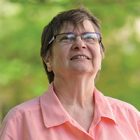
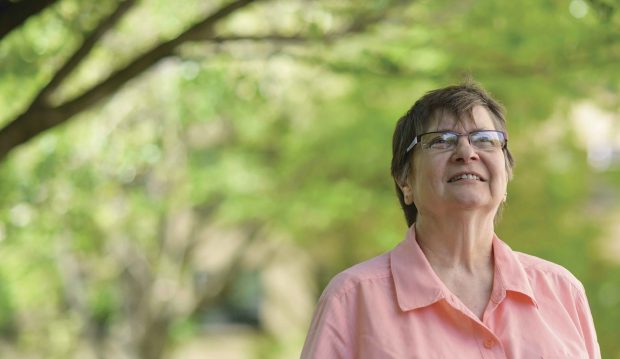
MOST DOCTORS HAVE war stories from their days as medical students: their first encounter with a cadaver; their first rotation in the emergency room. Few, however, compare with Karen Benker’s.
As a student at the University of Southern California’s School of Medicine from 1967 to 1971, Benker did rotations at what was then the L.A. County Hospital (now LAC+USC Medical Center), a large public teaching hospital in the predominantly Mexican-American neighborhood of Boyle Heights. She became especially familiar with the obstetrics ward in the Women’s Hospital unit, where she worked as an obstetric technician, delivering babies on the night shift.
It was an eye-opening experience.
On her very first day on the ward, Benker heard a senior physician declare how “wonderful” it was that the obstetrics department had just received “a big federal grant to cut the birthrate of the black and Mexican population.” Soon after, she would discover that many African- and Mexican-American patients were in fact bullied into being surgically sterilized.
“You want this?” she recalls hearing one resident ask a laboring woman as he held a syringe full of painkilling medicine in front of her, a sterilization consent form at the ready. “Sign!”
“It was barbaric,” says Benker, who is now an associate professor of health policy and management and associate dean for community public health affairs at SUNY Downstate College of Medicine in Brooklyn, New York.
In 1975, a small team of lawyers filed a class action civil rights lawsuit in federal district court against the hospital and state and federal officials on behalf of 10 Mexican-American women who claimed that they were coerced into undergoing a sterilization procedure known as tubal ligation. The lawyers argued that sterilizing their clients without their informed consent violated their right to bear children—a right guaranteed under the Supreme Court decision Roe v. Wade.
Once largely forgotten, the story of Madrigal v. Quilligan came to national prominence again in 2015 thanks to the release of No Más Bebés (“No More Babies”), a documentary film by Academy Award–nominated director Renee Tajima-Peña that explores the events surrounding the case. And the details of what transpired remain as disquieting today as they were when Karen Benker first witnessed them nearly 50 years ago.
Some of the women of Madrigal were sterilized without their knowledge while under general anesthetic, only to discover months or years later that they could no longer bear children. Others were falsely assured that the procedure was medically necessary or easily reversible; most were pressured into giving consent while they were in active labor, their minds fogged by painkillers. Several were accused by nurses of “burdening the taxpayers” with their offspring, or harassed by doctors who insisted that their poverty and immigration status would make it difficult for them to raise any more children.
Although a resident at the hospital leaked evidence crucial to the case, Benker was the only hospital employee who testified in court on behalf of the plaintiffs; the rest either agreed with what had gone on or feared retribution. “She’s a great heroine in my eyes,” says Virginia Espinosa, the historian who produced No Más Bebés. “She would not be silent.”
Although the judge found in favor of the defendants, the publicity generated by Madrigal helped draw attention to a pattern of coerced sterilization among minority and low-income women throughout the United States. (Other affected groups included African-Americans in the South, Native Americans under the care of the Indian Health Service, and working-class women in Puerto Rico.) The case ultimately helped drive changes to sterilization laws and consent protocols across the country, and expanded the conversation around reproductive rights to include not only abortion and birth control, but also the right to procreate.
As a result, says Benker, the women of Madrigal lost their case, but they won the battle.
Seated at a long oval conference table in the SUNY Downstate building, the surrounding neighborhood of East Flatbush visible through the window behind her, Benker—thoughtful, easygoing, and quick to smile—does not look like a firebrand.
Appearances can be deceiving.
Growing up in the hamlet of Quaker Hill, Connecticut, Benker always dreamt of becoming a doctor. As an undergraduate, she was already riding the bus to USC to serve as a guinea pig in the School of Medicine’s earliest experiments with case-based learning—a model of medical training that has students meet immediately with patients, rather than spending their first two years memorizing material from textbooks. She was, she says, fairly naïve, her politics moderately conservative.
But the sixties were tumultuous times, and Benker, who speaks of the high school friends she lost in Vietnam and describes the Watts riots that raged across South Central Los Angeles in 1965 as “earth-shattering,” remembers them as an era when many in her generation became increasingly aware of the injustices perpetrated within and by American society.
The experiences that she and her fellow students shared at L.A. County Hospital could only have hastened the process. For most, she says, their encounters with patients represented their first exposure to an impoverished black and Hispanic population, and “a first understanding of what it’s like to be a 40-year-old mother with seven kids who has to work 12 hours a day.”
If time and place contributed to the awakening of Benker’s social conscience, they also conspired to provide her with a singular opportunity to act on it.
In 1909, California became one of the first states to pass a law sanctioning the nonconsensual sterilization of the feebleminded and the unfit, thereby propelling it to the forefront of the American eugenics movement. According to historian Alexandra Minna Stern, by the time California repealed its sterilization law in 1979 in response to Madrigal, the state was responsible for one-third of the more than 60,000 nonconsensual sterilizations carried out nationwide in state-run hospitals and homes.
Even after eugenics lost its luster after WWII, many in California and elsewhere continued to embrace sterilization as a tool for combating overpopulation by limiting reproduction among welfare mothers, immigrants, and others regarded as representing a burden on society. In 1968, when Benker was in her second year of medical school, the Stanford biologist Paul R. Ehrlich published The Population Bomb, which predicted that out-of-control population growth would lead to mass starvation. By that same year, approximately one-third of all women of childbearing age in Puerto Rico had been coercively sterilized under a population-control program funded by the American government.
There were other factors at play, as well. The very notion of informed consent was still in its infancy: The National Research Act, which requires that doctors obtain informed consent from human research subjects, was passed only in 1974, following the revelation that hundreds of black men had been intentionally deprived of medical treatment as part of the Tuskegee Study of Untreated Syphilis in the Negro Male. What’s more, the late 1960s saw a massive influx of federal funding for birth control and family-planning services, much of it pumped into public teaching hospitals like L.A. County, where residents often felt pressured by their superiors to perform a certain number of surgeries every day. And while not all hospital employees harbored racial and ethnic prejudices, some clearly did: In her deposition for Madrigal, Benker described how physicians in the Women’s Hospital referred to Chicana patients as “beans.”
Add it all up, and you have what the sociologist Elana Gutierrez has called a “perfect storm” of circumstances leading to coercive sterilization. With its high proportion of African-American and Mexican-American patients and its factory-like atmosphere—Benker recalls the labor room as a small space crammed with women crying out in pain as nurses and doctors rushed about to free up beds—the obstetrics ward at L.A. County may have been especially conducive to such abuse.
 “It was a good environment for people to do the wrong thing,” she says.
“It was a good environment for people to do the wrong thing,” she says.
It was also, for Benker, a crucible of sorts; she would devote the rest of her career to public health, advocating on behalf of immigrants, children, and other vulnerable groups.
After graduating from USC, Benker did an internship at Lincoln Hospital in the South Bronx, an area whose large Puerto Rican population still bore the scars of the territory’s mass sterilization program. While there, she helped establish the Committee to End Sterilization Abuse, or CESA (“stop” in Spanish), which convinced the New York City Council to pass a law requiring that a woman give consent no less than 30 days before being sterilized. Then she heard about Madrigal.
Antonia Hernández, the young Latina lawyer who served as co-counsel for the plaintiffs, came to New York to discuss the case and slept on the floor of Benker’s studio apartment. Benker, in turn, flew to Los Angeles to help raise funds for the suit. In 1978 she gave her testimony in federal court, a lone doctor speaking out against what she had witnessed seven years earlier.
Back in New York, Benker served as director of programs for homeless families at the New York City Department of Health; conducted research for the Legal Aid Society on the health outcomes of homeless pregnant women, which led to reforms in the services provided to such women; and investigated the conditions of children living in foster care. After coming to SUNY Downstate in the early 1990s to work with HIV patients, she became director of the school’s first Community Health Center and developed its Master of Public Health Program.
When Espinosa began researching Madrigal in 1994, Benker readily agreed to participate—just as she did when Espinosa and Tajima-Peña decided to make No Más Bebés. “Bringing the facts to a wider popular audience was thrilling to me,” she says. “It meant a new generation of people could learn about this very disturbing aspect of medical and social injustice.”
These days, Benker focuses on policy issues surrounding mental illness and spends most of her time teaching—or as she puts it, trying to develop a healthcare workforce that won’t make the mistakes of the past. Mistakes that she has seen firsthand and has spent a lifetime trying to make right.
“It’s a great way to get up in the morning,” she says.
And with that, the heroine of Madrigal pushes back her chair, rises to her feet, and prepares to set an exam for her students—young men and women, many hailing from working-class immigrant families, whom she is training to take up a battle that she has waged for nearly half a century, and of which she has clearly yet to tire.
—Photos by Casey Kelbaugh
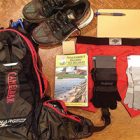
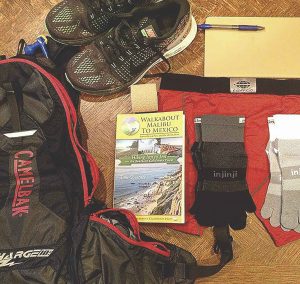 To enter Los Angeles County from the southeast, follow Pacific Coast Highway through Seal Beach and onto a bridge spanning Los Cerritos Wetlands and the San Gabriel River. Off to your left, the marshy expanse turns to ocean. On your right, factory smokestacks stand against a hazy mountain range. The four-lane road narrows as it rises over the swamp. Go about a quarter mile until you reach a stoplight, where the road levels and widens again. You’re in Long Beach now. There’s a Whole Foods on the left if you’d like a snack.
To enter Los Angeles County from the southeast, follow Pacific Coast Highway through Seal Beach and onto a bridge spanning Los Cerritos Wetlands and the San Gabriel River. Off to your left, the marshy expanse turns to ocean. On your right, factory smokestacks stand against a hazy mountain range. The four-lane road narrows as it rises over the swamp. Go about a quarter mile until you reach a stoplight, where the road levels and widens again. You’re in Long Beach now. There’s a Whole Foods on the left if you’d like a snack.
Crossing this kind of imaginary line on a ho-hum stretch of highway is hardly noteworthy for drivers. Likewise for cyclists, able to coast up the easy incline in their own lane. But since I’m on foot, my experience is more visceral. I toe the rightmost white line of the bike lane and feel the surprising definition of the paint underfoot. I hurdle a semicircle of fibrous black rubber, being careful not to land in a puddle of shattered window glass. Still, I’m thankful to be on the road, rather than slogging through the mud as I did several days before. As for that imaginary line, it still isn’t real, just like that tall can of coconut water isn’t really a glass of champagne. Sure tastes like sweet, small victory though. Cheers to staying alive and feeling it, too.
At a table outside the Whole Foods, four cyclists who blew right past me on the bridge sit eating fruit and potato chips.
“How long have you been running, man?”
“Since Mexico. Only 30 more miles till L.A.”
“Damn, dude! That’s wild. I’ve never even thought of going that far.”
“Ha, to be honest, I hadn’t either. Just went for it.”
The trip had come together quickly, almost foolishly so. I remember waiting to board an afternoon flight to San Diego while I took stock of my personal effects: a small CamelBak, an outdated guidebook, a four-year-old iPhone with a faulty battery, a sore left knee. Less than two weeks prior, I’d volunteered to travel the 150 miles from the Mexican border to downtown Los Angeles on foot, by myself, blazing the trail for others to make the journey this August. It would be called El Camino del Inmigrante—the Way of the Immigrant—a display of solidarity and a rallying cry for policy reform, an initiative proposed by my father.
A few months before, my father and I had completed the Camino de Santiago together, walking 500 miles from the Pyrenees to the Atlantic across northern Spain. And as it so often does, emerging from such a crucible subconsciously compelled us to apply the principles of pilgrimage to our own lives, framing our goals and pursuits as a journey necessary for self-actualization. For me, the rite marked a return to running and a renewed will to explore. For my dad, it provided a means of mobilizing other activists and allies, using an inherently spiritual framework as a forum for discussing worldly issues. CEO of the Christian Community Development Association and longtime crusader for immigration reform, he’s lived the past 25 years of his life in La Villita, a Mexican community on Chicago’s West Side, feeling the struggle of the undocumented American on a personal level while giving voice to it on a national one. He is just the man for this mission. As for me—restless, a little reckless and perpetually in search of purpose—I make the perfect scout. Vamos.
The real thing will be a 10-day affair, with dozens of walkers, plus nightly events and fellowship. (They will also be skipping the dangerous parts, for the record.) For this scouting trip, I’m giving myself only five days, on account of professional obligations back home.
Now, standing in International Friendship Park—as far southwest as you can go on U.S. soil—I slap the wrought-iron border fence as if to start a stopwatch and take off, hoping the dirt trails will prove a safer alternative to the sidewalk-less streets. Before long I’m high-stepping through the muddy chaparral down dead-end paths, dodging boulder-sized tumbleweeds. There are helicopters patrolling overhead, trying (I imagine) to catch me runnin’ dirty. But it isn’t just the danger or the adrenaline that gets my mind running wild. Rather, it begins with the diagnostic scan any runner naturally takes of his or her own body over those first few moments or first few miles, identifying any sensations—good, bad or otherwise—and weighing them against the reality of the distance ahead. For me, it’s a hyper-awareness that can’t help but radiate outward, connecting me to the street or the buildings or passersby.
Perhaps this is why so many people claim to do their best thinking on the move. Besides simply getting the blood flowing, the movement plants a tiny seed of symbiosis, sprouting into curiosity, empathy and compassion.
I make it out of the dirt-road labyrinth and up the Silver Strand to Coronado. Into San Diego via ferry and on to La Jolla, where I sleep in a van with a minimalist friend from college. Past Torrey Pines Golf Course, merging onto the sidewalks of Highway 101, I shuffle through Del Mar, then Encinitas, then Carlsbad, straight into an ice bath in the tub of an Oceanside motel. Two days, 60 miles down. Not fully awake yet, I find myself staring down the end of an automatic rifle. One does not simply jog into Camp Pendleton, it seems. The chunky-necked marine lowers the barrel and points it toward the bus I have to take to the other side of the base. I hop out in San Clemente and continue on to Laguna Beach, fear-sprinting the last few miles on the shoulder of the narrow highway. I watch the sunset on a rock and go out on the town for some beers, at least one for each of today’s brushes with death. The fourth day is heavenly by comparison, past Newport, Huntington and Seal Beach on a long, leisurely stroll. And then, the bridge.
Back in L.A. County, mind as sharp as I can ever remember, I’m now headed in a clear direction. It’s exactly the opposite of how I left five years prior. Lining up alphabetically to take part in commencement exercises, I could see the banners strung upright from the lampposts along Stover Walk. They were beaded with water from the drizzling rain, the 2-D portraits of my outstanding friends and classmates taking on a slick, watery shine. They were the faces of Campaign Pomona: Daring Minds, celebrating an attribute supposedly shared by all of us receiving diplomas that day. It was an unsettling sight, because my own mind felt as blunt as a butter knife. I was in a fog, stuck in the mud, wondering how I would make myself useful—let alone successful—outside of Claremont.
To say that the opposite of rumination is motion—literally moving forward—seems strangely metaphorical. “Moving on” in a psychological or emotional sense somehow seems far more practical, even though this act of personal progress is itself a metaphor derived from corporeal movement. “Walk it off” is sound advice after being plunked by a fastball, but it’s hardly a tonic for indecision or identity crisis. Those are situations you reason and educate your way out of, carefully weighing the possible outcomes before starting down a path in earnest. It’s not called “Campaign Pomona: Daring Bodies,” mind you.
But as I returned home to Chicago as a new graduate, confused and neurotic, something strange began to happen. I started walking and running long distances, sometimes for exercise, sometimes because I was too broke for bus fare, but mostly because I didn’t know what else to do. And the more I moved from point to point—across the neighborhood, across the city, across finish lines—the more connected it all seemed to be. Not just this house to that house or this train station to that office building, but this community to that one, this reality to one a world apart. After an interdisciplinary education from a liberal arts college, this was my graduate course in Applied Everything. Each discrete skill was plotted on a map, and now I was learning to connect these disciplines to forge a purposeful path, one that had now led me back to where this meandering journey began.
I say goodbye to my new cyclist friends at the Whole Foods and jog the last few miles into Cambodia Town, Long Beach, where I stay for the night. Up and out of there at the crack of dawn, my fifth and final day seems almost ceremonial, just an easy 20-mile trot up the L.A. River bike path, through Skid Row and straight to the Westin Bonaventure downtown, the host hotel for the annual CCDA conference and the end point of the Camino. I slap the side of the building as if to turn off the stopwatch and call my dad. It’s done and dusted—a clear, walkable line from the wrought-iron fence to a shiny marble bench there at the valet stand. I take a seat and stare down at my shoes. They’re still caked with dried mud from the border field.
To claim that I suddenly understand the struggle of the immigrant because I ran a long way up a scenic trail would be ridiculous. I don’t; I never will. If anything, an affinity for recreational pain is proof that I’ve suffered—truly suffered—very little in my lifetime. But to reduce physical effort to mere sport may be just as misguided. I’ve seen aimless tours of a city open the mind to life’s beautiful web of alleyways and back roads. I’ve seen a cross-country trek take a father-son relationship from small talk to real talk. And I’ve felt a boldness of body spark an audacity of mind. So to say that this journey has made me a more engaged and empathetic individual, and that it may yet play a tiny role in some big change—well, that doesn’t sound ridiculous at all.
The following day I return home. There’s a letter from Pomona in my mailbox, announcing the conclusion of the historically successful Daring Minds campaign. And upon seeing it, instead of that undeserving, stuck-in-the-mud feeling from five years back, I feel proud, knowing that there was something daring in me all along. The only difference was, I had to dare feetfirst and work my way up.
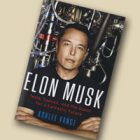
 In his New York Times bestseller Elon Musk: Tesla, SpaceX, and the Quest for a Fantastic Future, Ashlee Vance ’00, veteran tech journalist and TV host of Bloomberg’s Hello World, reports on the daring business titan’s life and the rise of his innovative companies in finance, the auto industry, aerospace and energy. With exclusive, unprecedented access to Musk, his family and friends, Vance interviewed nearly 300 people for a book hailed as “masterful,” a “riveting portrait,” and “the definitive account of a man whom so far we’ve seen mostly through caricature.” Vance talked to PCM’s Sneha Abraham about the journey of the book and about Musk—a man both lauded and lambasted.
In his New York Times bestseller Elon Musk: Tesla, SpaceX, and the Quest for a Fantastic Future, Ashlee Vance ’00, veteran tech journalist and TV host of Bloomberg’s Hello World, reports on the daring business titan’s life and the rise of his innovative companies in finance, the auto industry, aerospace and energy. With exclusive, unprecedented access to Musk, his family and friends, Vance interviewed nearly 300 people for a book hailed as “masterful,” a “riveting portrait,” and “the definitive account of a man whom so far we’ve seen mostly through caricature.” Vance talked to PCM’s Sneha Abraham about the journey of the book and about Musk—a man both lauded and lambasted.
This interview has been edited and condensed.
PCM: Why write about Elon Musk?
Vance: When I started out and I was at The New York Times and places like that, Elon was just never really on my radar. I sort of felt like he was this guy who used to run around Silicon Valley promising all these wonderful things and never really delivering on them. I kind of pegged him as your run-of-the-mill techno-utopian guy. In 2012 everything started to change for me because SpaceX got to the International Space Station and Tesla came out with the Model S, which not just people in Silicon Valley but people in Detroit and around the world hailed as one of the best cars ever made. And SolarCity, his third company, filed to go public. That all happened in the span of just a couple of months.
I just thought, “Wow. This guy who’s been promising all of this stuff for all these years has just delivered in this huge way.” So I set out to do a cover story on him for Businessweek, and that’s when it really became obvious to me that this is the book that I wanted to do.
I visited the Tesla factory, which is spectacular, and then the SpaceX factory, which is really what hooked me in. It was right in the middle of Los Angeles, and I thought they’d kind of be cobbling together this one rocket, but they were mass producing rockets in this gleaming white factory, with thousands of people running around, and there was just this unreal energy to the place.
And then I interviewed Elon for the story, and he struck me as so much more interesting than I had ever really given him credit for. He has this amazing life story, this kind of self-made man from South Africa, who had a very difficult upbringing and all these trials and tribulations along the way. And then he was just way more authentic and down-to-earth when I interviewed him than I expected, and I thought, “Man, this guy has lived an incredible life and would make a great story.”
PCM: How did this book take off?
Vance: So after the interview for Businessweek, I sent him an email and asked, “Hey, have you ever thought about cooperating with a book about you?” And he said, “Look, a lot of people have asked me, and I’ve had to turn them down, and I just don’t think it’s the right time.” And I said OK, and then I went and I sold the book anyway in New York. I thought if I sold the book, it would sort of force his hand, and he would end up cooperating. So then, after I sold the book, we had a big hour-long meeting at Tesla’s headquarters in Palo Alto. And Elon came in and I gave him the whole spiel on why I w wanted to do the book and why it was a good idea for him to do interviews and all that.
And two days after that meeting he sent me an email, and he said, “Look, I can’t do this.” And I think he thought I would give up on the project—and I did think about it.
I went out for this eight-mile run after that and was really distraught. I had already sold the book. I kind of rolled the dice and lost. And I just was out there running and I thought, “Well, what would Elon do in the same situation? He would just keep going.” So I decided to keep going, and then I spent the next 18 months interviewing. I interviewed about 200 people and it was all his friends, his family, his ex-girlfriends, his ex-employees.
PCM: So he didn’t send out a “Don’t talk to Ashlee” memo?
Vance: Yeah, that was a weird thing. I didn’t know how things would play out after he said no. I kind of thought he would tell people not to talk to me, but no, the opposite happened. A lot of people that I reached out to would, of course, write to him or call him and say, “Hey, this guy wants to talk to me,” and he gave approval to everyone. Nobody turned me down. And so that encouraged me because I thought, “He’s not making life as miserable for me as he could, and so I’ll keep pushing forward.” And then after those 18 months that’s when he called me at home one day, and then we had dinner shortly after that.
In the phone call he said, “Look, I might cooperate, but I want control of the book and everything.” So I was thinking, “Oh man, I’ve come this far and now there’s this thing that I just cannot agree to.” And so I was still sort of dreading that, and so then I got to the dinner and I had this huge speech. I had spent time rehearsing all these reasons that it made sense for him to cooperate and why I had to do it like a proper journalist and not give him control. And I got about five minutes into the speech, and then he just said, “OK, fine. Let’s do it.” My reaction then—I had to hold it all inside—but I was screaming on the inside. So much work had gone into it, this huge gamble and just this intense amount of pressure. It just felt like, “My God, this is all going to be worth it.” And I knew the book would be so much better with him participating in it.
PCM: How did your perception of him change as these interviews over the next year were happening? Because you write that you came in thinking he was just another big shot sort of megalomaniac.
Vance: My impressions had already started to change a bit after I did the cover story. I was always really impressed with how open he was. He never came in with any handlers or anything; it was always just me and him. So initially, for the first three interviews, it was frustrating because he was basically repeating a lot of things that he always talks about, and I felt like I wasn’t getting anywhere. And then it was around the fourth interview where he really started to open up, and I felt like I was seeing a side of Elon that no journalist had ever seen before. We could talk about anything, and he never dodged questions or tried to deflect me. I felt like he gave me these really rich answers about his philosophies of life, and about all these moments in the history of the company, and I got this much deeper insight. We would sort of trade off-the-record information back and forth.
Even when I was first starting the book, he had accomplished these amazing things, but it was unclear how sustainable these companies were. If you really could make them enduring and still pull off all this lofty stuff. Half the people still thought that he was crazy.
And over time, as I learned more and more about the companies and Elon, I just came away, not in a fanboy sense, but to sort of witness this guy firsthand and his resolve and how relentless he is, whether it’s him telling a story or it’s meeting the thousands of engineers around him. I just came away thinking, “Man, this guy. It may take him longer than he says—things might be more expensive sometimes than what he says—but this guy is absolutely going to accomplish what he sets his mind to.” In that sense, he’s unlike any exec I’ve ever interviewed. There are obviously very driven, intelligent people. But to me, what became obvious is—this is not a job for him; it’s a life’s calling. He is sort of playing on a different field, and a lot of people around him are as well. My big takeaway is that he was just more capable than I had even imagined.
I’d say the other thing I’ve learned over time is just that Elon really is a hard dude. You would hear more and more stories about what he expects from employees or the demands he puts on people, and then I started to feel that personally. It was a very rocky, back-and-forth thing that we had. Where he really didn’t want to be participating in this but was doing it and wanted to exert control, and I wouldn’t let him. So, yes, actually I felt all this stuff personally, and I feel like that gave me a taste for the full Elon.
PCM: How did he react to the book?
Vance: Well, it kind of went in stages. He got the book and then he was going through it and he was emailing me all of the time, like every couple of pages. So that was kind of an interesting experience, but most of that was sort of harmless. He plucked out a couple of things that he disagreed with, and then at the very end of a couple of days of him reading it, he came back and said it was 95 percent accurate, which for Elon was hilarious, not only that he gave me a score, but also that it was that high. He said it was well done. A couple of weeks passed, and then the media finally got their copies of the book, and a couple of the early stories focused on what a tough boss he is, and he got really upset that that’s sort of the direction that the press was taking at the beginning. So then there was big blowback. He was really unhappy that he was kind of getting portrayed that way, and so our relationship has not been the same since.
PCM: How does he come across, and how would you describe his personality?
Vance: The most basic thing is just he’s the most intense, driven individual I’ve ever met and one of the most capable human beings in the sense that he’s in all of these different industries. He’s doing technical stuff, marketing, design, day-to-day operations of the companies. It’s this incredible thing. As a person, there are different flavors of Elon. There’s the guy that you sit down with at dinner, and he’s not immediately charming and charismatic. He’s more like an engineer. He’s very serious and takes a little while to warm up. But then, even that guy, you warm him up and then he’s obviously very bright, he’s funny. He has an amazing sense of humor that I think most people miss. And he’s amazing to talk to. It was the thing I would look forward to most every month. So there’s that side to him—this surprisingly down-to-earth, intense, intelligent, funny guy. And then there’s the other side to him, too. For the employees, he’s super-demanding. He sets these incredibly lofty goals. He expects everybody to meet them. He can be really hard on people in meetings and in that sense comes off as unempathetic to his people and can come off as kind of callous and cold. And then, I think, for his friends there’s a very different side. I think he’s got a small circle of really close friends. And I think for them, he’s a much more fun-loving guy who is a lot of fun to be around.
PCM: Where do you think his faith in himself comes from? Because you write about how he had this awful childhood, and reading about that, one would guess he wouldn’t turn out to be the way that he is. Where does that sense of self-confidence that he can accomplish anything come from?
Vance: I think that his difficult childhood in a lot of ways hardened him and taught him to be willing to take risks. It’s a similar story you see with lots of these guys. If you leave the country where you’re born—say you go to Canada with zero in your pocket, and you’re off on your own at this young age—there are few things later on that are going to be harder than that. In a sense, running a business and taking a risk and all of that pales in comparison to what you’ve already been through. He talks about it a lot. He learned to just sort of suffer. So things like long hours or a business collapsing or all this pressure, he deals with that really well. I think that self-confidence thing definitely seems like it was learned over time, because at Zip2 and PayPal you see this guy who is not a very sure-handed manager. He’s really upsetting his employees. He’s having fights with other board members. And I think it was during that process where he sort of learns to become who he is today, and his self-confidence grows almost out of necessity.
He’s very logical, I think, and so part of it is just if he sees something he wants to do, and he thinks it’s the right thing to do, he’s decided that he’s going to do it. It’s this very binary thing. He’s just like, “This makes sense to me. I’m going to pursue it with all my energy.” I think he’s just wired a little bit different than most people.
PCM: So, he wants to turn humans into space colonizers. What do you think it reveals about his personality that his goals are so high?
Vance: I think it’s oddly that logical side of him. I don’t know. I guess you could think back to Columbus or Magellan or somebody, these really adventurous, flamboyant explorers. I think his original impetus for this is much more clinical and logical. “There should be a backup plan for the human species, and there isn’t a very good one, and I’m going to go build it.” And he does have this weird form of empathy, where he genuinely cares deeply, not about individual people as much but more about the human species. He would break down in tears when he was talking about the colony. It comes from this very logical, software-programmer place that you should back up your files and your work.
PCM: Do you think he has an equal today?
Vance: No. People always want to compare him to Steve Jobs or Edison or whatever. It’s sort of hard. It’s difficult because he’s a work in progress, and we don’t know where some of his stuff is going to end. But even just the face value of what he’s accomplished so far, you cannot find another human being that’s changed industries as diverse as finance, aerospace, automotive and energy. I think on that level he has no equal today or really ever.
I think clearly he has to get an affordable electric car out that is good and that people want and that they sell a lot of, in order for him to be considered a success with Tesla. I think SpaceX has to really get this reusable rocket technology done. He’s got to get to Mars in order for that to be considered a huge, forever-world-altering success. For SolarCity, it has to be proven that that’s a really sustainable business. There are a lot of people that argue that they’re not going to be profitable going forward. And so yeah, there are all of these question marks about exactly where he ends up in the pantheon of inventors and businesspeople.
As far as equals today, Larry Page and Jeff Bezos come to mind. I feel like those three guys are all in this camp of people who are willing to spend money on big, long-term things that are far afield from apps and things like that. They’re all working on these big computer services but also these crazy machines, and really bringing science fiction to life. So, in that sense, I think they’re sort of in similar camps. But I think Elon’s probably taken bigger risks so far and arguably been more successful with these other businesses.
ELON MUSK: TESLA, SPACEX, AND THE QUEST FOR A FANTASTIC FUTURE
BY ASHLEE VANCE ’00
ECCO, 2015
400 PAGES | $28.99
Dying With Dignity
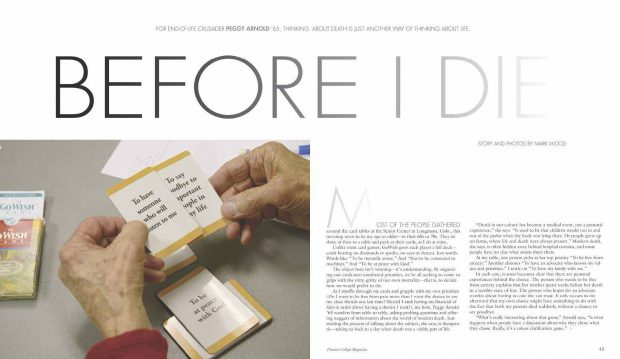
I read your “Before I Die” article with interest, as I am sure most of us from the Class of 1962 did. It is called current events. However, I suggest that there is one important part of the death process that was not included in the story.
Twenty years ago Oregon passed the nation’s first Death With Dignity Act. Two years later an attempt to repeal it was soundly defeated. My wife and I voted in favor of the act both times, little suspecting that we would use it later. Since then, Washington, Vermont, California and Montana have passed virtually identical laws, and quite a few other states are considering such a law now. The law is nothing at all like the “death panels” that Gov. Palin carried on about for a long time.
In our case, my wife had colon cancer surgery and then breast cancer surgery within one year. Initially the doctors believed that the surgeries were successful. The colon cancer never returned, but the breast cancer came back three years later. After four more surgeries during the next six years, four rounds of radiology treatments (15 each) and close to 100 chemotherapy treatments, her body began to stop functioning. She did not want to get to a point that she would be a “vegetable” (her term) in a care facility, and the family could recognize that life, as any normal person would like to live it, was about over. She was bedridden and had stopped eating or processing food.
A two-week process is required, with certifications from two doctors that the patient’s life will likely end within six months. The doctors referred us to Compassion & Choices, a fabulous group of volunteers nationwide who are leading the effort to expand legislation in other states, and who provide volunteers to help with the process. My wife took the medicine and passed away in less than an hour. She was satisfied with the process, as were all of the family, and friends when told about it later.
C&C can provide much more specific information on the subject. But with the law now in effect in CA, and with so many Pomona alums living in California, I believe it is important that information about Death With Dignity should be included in the otherwise very interesting article you wrote this quarter.
—James A. (Jim) Johnson ’62
Portland, Ore.
Face to Face
 We loved the latest Pomona College Magazine “Face to Face” feature. We wanted to share our relationship to last a lifetime.
We loved the latest Pomona College Magazine “Face to Face” feature. We wanted to share our relationship to last a lifetime.
In the summer of 1963, we each received a letter from Dean of Women Ina T. Nider informing us that we had been assigned to one another as freshman roommates. It was apparently a successful pairing. We were suite-mates sophomore year and roommates again our senior year. Linda was a religion major, active in Chapel Committee and the Claremont Committee to End the War in Vietnam. Lesley was a biochemistry major and spent most of her time in the chemistry lab.
After graduation, Lesley went on to obtain a Ph.D. in molecular biology at the University of Wisconsin, did two postdoctoral fellowships at UC Berkeley and then worked for 32 years at the Oregon Health and Science University in Portland, starting as an assistant professor and serving her last 20 years as provost. She has served as president of Pacific University in Forest Grove, Ore., since 2009.
Linda worked in a garment factory in San Diego, then obtained her teaching credential and taught for 36 years in inner-city Los Angeles, the last 28 years at Manual Arts High School, retiring in 2009. Finding that unsatisfactory, she went back to school, obtained a master’s in history at Cal State Los Angeles and is now an adjunct instructor at East Los Angeles College.
Through the years, we have shared annual trips to Disneyland with our kids, weddings, divorces, an untimely funeral and innumerable photographs of adorable grandchildren. We currently see each other a couple of times a year, chat regularly on Facebook and compete daily in cutthroat games of Words With Friends.
Thanks, Ina T.
—Linda Baughn ’67
Los Angeles, Calif.
and Lesley Moore Hallick ’67
Forest Grove, Ore.
You do, indeed, publish a beautiful magazine! I usually start at the back, to see if any of my classmates are in the Class Notes. Then I page through the entire thing.
However, this month your “Face to Face” feature grabbed my attention right away, so I read all of these stories first thing. That was a clever and time-consuming project for you, I would think. Loved it! The only face I knew was that of Bob Herman ’51. As I remember, he has led our class tours of the campus on Alumni Weekends. A terrific storyteller! My husband, DeForrest ’61 and I met at Pomona, so the married couples who met there were of special interest. We’ve been married 52 years.
One of the many things I like about the magazine is how you include stories from the school’s past, along with what is currently happening on campus. Of course, I love to read what the graduates have done recently. I’m always interested in the books they’ve published. I appreciate your including very short articles as well as longer ones in just the right mix. Some college magazines are so dense with material that there is no hope of reading everything.
DeForrest and I spent a bit of time studying Jeff Hing’s gorgeous double-page photo of the campus. The snow-covered mountains with the clouds spilling over them were spectacular.
I’ve finished reading the “Letter Box.” So, what to read next … the story on Cuba, since some of my friends are traveling there? The article about the celebrity photographer? Maybe about that “youngster” Peggy Arnold, who graduated three years after I did.
My grandniece is a Pomona student at the moment, so I feel that your magazine is keeping me in touch with her there. I’m looking forward to my 55th reunion next year. How I love returning to that beautiful place, full of so many memories.
—Bonnie Bennett Home ’62
San Jose, Calif.
As a friend of Pomona College, I have enjoyed reading Pomona College Magazine for many years. The latest issue moves me to send this appreciation of the continuing quality of the publication under your most competent custodianship. I especially liked the piece about relationships. This reminder of how important and durable they can be during one’s collegiate interlude is nicely done. Thanks to you, your staff and contributors.
—Gilbert Pattison Joynt
Seattle, Wash.
Pomona Lifeline
Since my retirement in 2006, the Pomona College Magazine has become my cherished lifeline to the College and the Pomona family and community that was my home for so many years—and I miss so keenly. Each issue offers delight and fascination for me, as you offer marvelous features about the extraordinary individuals within our diverse community whose creative lives have so enriched our world. As such, the magazine is a beacon of hope for me in a world so darkened by forces of bitter divisiveness and destruction. Our Pomona students, faculty, administration, staff and alumni all have voices within your magazine, and I read every word to learn more about their lives and accomplishments and to celebrate them.
May I say, too, as an English teacher forever enamored with fine writing, that the quality of writing in every article is superb. I especially enjoy your “Stray Thoughts,” always a personal and engaging reflection on issues at hand from your marvelously unique and candid point of view.
Your layout and design are glorious indeed. You offer visual as well as verbal pleasures.
With every best wish for the flourishing of the Pomona College Magazine—and for your ongoing delight in your devoted and inspired efforts for us all.
—Martha Andresen Wilder
Professor Emerita of English
Claremont, Calif.
Note Correction
In the Class of ’59 Notes in PCM Spring 2016, there are three entries: Epps, Lathrop Wells and myself. Two of us were botany majors (there were, in total, three botany majors in 1959. How’s that for keeping the Pomona College connection? I think botany was unique because of the three-day field trip fall and spring to all of the vegetation zones of the West over a three-quarter-year span. These field trips formed a cohesion to the department and College, just as student research with faculty does today. Both Betsy and I had keys to the botany building—master keys at that—and this was a bonding element also. But somehow, my note in Class Notes ended short of the complete sentence. I intended for it to say: “I am rich in experiences, but in retirement short on pension. Pomona and Harvard shaped my life, and I will be eternally grateful for the expanding opportunities and challenges I took from them.” I appreciate the correction. We are downsizing and I found 60-year-old 8-page magazines—a far cry from now.
—Garrison Wilkes ’59
Hingham, Mass.
Alumni, parents and friends are invited to email letters to pcm@pomona.edu or “snail-mail” them to Pomona College Magazine, 550 North College Ave., Claremont, CA 91711. Letters may be edited for length, style and clarity.
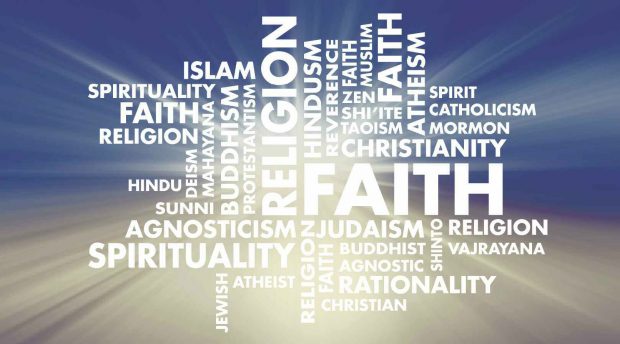 Pomona’s original seal, emblazoned with the words “Our Tribute to Christian Civilization,” adorned every Pomona diploma for almost a century. Appropriate in 1887 for a church-founded college where theology was part of the curriculum, it slowly became an anachronism, as the College cut ties with the church and drew students from many traditions. Steve Glass ’57 still laughs good-naturedly about receiving a diploma imprinted with that motto just before going to Bridges Hall of Music to be married in a traditional Jewish ceremony.
Pomona’s original seal, emblazoned with the words “Our Tribute to Christian Civilization,” adorned every Pomona diploma for almost a century. Appropriate in 1887 for a church-founded college where theology was part of the curriculum, it slowly became an anachronism, as the College cut ties with the church and drew students from many traditions. Steve Glass ’57 still laughs good-naturedly about receiving a diploma imprinted with that motto just before going to Bridges Hall of Music to be married in a traditional Jewish ceremony.
Over the years, as American culture grew steadily more secular, American colleges—once places for reinforcing inherited belief systems—became, instead, places for questioning them. I was reminded of this fact as I prepared for this issue, when a couple of students declined to take part because their parents weren’t yet aware of their evolving beliefs.
Just in the past decade, according to a study by the Pew Research Center, the portion of the “millennial” generation with no religious affiliation has grown from a quarter to more than a third. Pomona students may be slightly ahead of that curve, judging by the Princeton Review’s rather eclectic rankings, in which Pomona seems to be perennially listed in the top 10 for “least religious students.” (Last year, we were number nine.)
But another study, conducted at UCLA in the early 2000s, found that while religious affiliation typically declines during those college years, “spirituality”—defined as “an active quest for answers to life’s ‘big questions,’ a global worldview that transcends ethnocentrism and egocentrism, a sense of caring and compassion for others coupled with a lifestyle that includes service to others”—actually increases.
That’s one of the reasons why institutions across the country are beefing up offices that provide spiritual counseling and promote religious expression or community service. Here at The Claremont Colleges, for example, the Office of Chaplains recently appointed a new Muslim chaplain, who joins Catholic, Protestant and Jewish chaplains at the McAlister Center to support the needs of individual students and groups spanning a wide spectrum of beliefs.
Since 1914, Pomona’s gates have welcomed students who are “eager, thoughtful and reverent” and encouraged them to “bear their added riches in trust” for humankind. Today we may understand those words a bit differently than when they were first carved. We may speak about reverence for truth instead of reverence for a particular deity. We may discuss the ethic of helping others without framing it in a religious context. But Pomona students continue to keep the faith in their own individual ways.
—MW
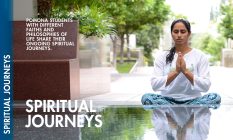
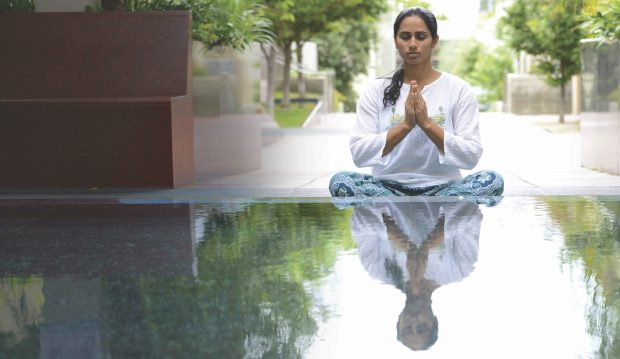
Meghana Rao ’16
“My experience with Hinduism has a lot to do with community, and the stories within that community. So one way that I express and experience my faith is through dance. I started learning kathak, an Indian classical dance, when I was about 7. It used to be a temple dance, and you would dance it to devotional songs. I don’t know if most people think of dance as a religious experience, but a lot of those devotional songs are very personal for me, so dance has been a very helpful tool to keep me connected to my faith. It’s my way of sharing my culture and my faith with other people.
“Back at home, my religious experience was very community-related. My family would tell the old stories. That community has been a little harder to find here. There is a Hindu community, but it’s such a varied and diverse community that those aspects don’t necessarily come up as much. That’s not to say I don’t connect with people here—I just connect with them in other ways, and my faith has been more of an internal, personal experience. I imagine it’s similar for a lot of people who come here. You meet all these different people, and the ways that you connect are not necessarily through your faith.
“At home, every morning my sister and I would just sit and say this chant called the Gayatri Mantra, which you’re supposed to say nine times every morning. It’s about greeting the sun and accepting the knowledge that it gives you. Here, it just didn’t seem like the space to do that. If you have a roommate, for example, she may sleep late and you don’t want to wake her up. So that’s become an internal thing for me. When I see the sun, I think about it, but I don’t physically chant every morning. That’s an example of how it was more of a communal activity for me at home, whereas here it’s an individual thing that I say to myself. I don’t want to impose my faith on other people. It is a personal thing, and I’m OK with that.
“A lot of Hindusim is kind of a philosophy about life. It’s an outlook on how life should be lived. It’s not necessarily tied to a higher power. There’s freedom for you to shape your own philosophy and views on life within the culture and within the faith. The creation myths and things like that, I take as myths. I don’t necessarily take them as true, and that’s a personal choice. So for me there hasn’t really been that conflict between faith and academics, because I think of it in more of a symbolic sense.
“Every night before I go to bed I say prayers. In some ways, it’s more like a habit than something intentional, but I just can’t go to sleep until I’ve said them, even if it’s just kind of whispering them to myself. I think it’s kind of a connection to home.”
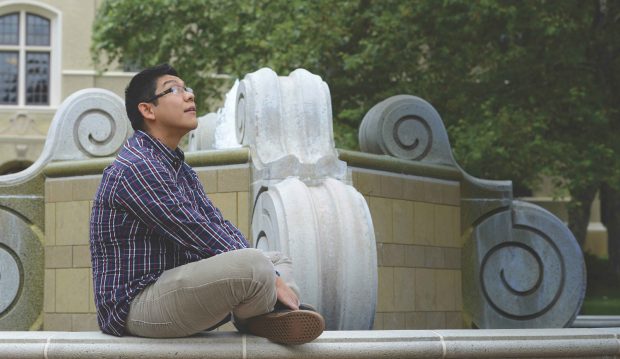
Jose Ruiz ’16
“My parents are from Mexico and they grew up Catholic. It’s ingrained in the culture. So just picking that up as I grew up at home, it became a part of me as well. In high school I really got curious about the religion itself, and the morals it teaches and the lessons that Catholicism has to offer. So I spent a lot of my free time just kind of exploring the Bible, exploring religious texts, spending time with youth groups at church.
“I think just coming to campus, you get this perception that there’s no presence of religion here, or that it’s kind of uncomfortable to talk openly about your religious beliefs. But as you spend more and more time here and talk to more and more people, you do find a sense of community, people who will relate to you on a religious basis. At the same time, you also end up talking to students who challenge your beliefs in terms of what your particular church has done in the past—different scandals, different wars, different administrative events that reflect badly on your religion. But I think at the end of it all, it’s definitely very constructive to be able to listen to some of those concerns but still to be able to practice your religion, so that you can help to prevent those things from happening again in the future.
“I’ve met a lot of students here who are Jewish, a couple who are Hindu, and a lot of students who are of the Protestant or evangelical faiths. So they’re always very interesting, in that a lot of our beliefs are very similar—like when you’re talking about straight-up morals or how you act with other people. Obviously there are nuances in how different religious ceremonies are held—all the history that goes behind it—but I’ve definitely been able to talk to people of different faith backgrounds and help my faith grow because of that.
“Religion evolves over time, just depending on the experiences that you go through in your life, so I guess coming to college in itself can be a way for you to strengthen your religious beliefs and anchor yourself to the beliefs and the morals that are important to you. A lot of students come here and they take whatever opportunity they can get to let go of their religion—because it was imposed on them by their parents or it just didn’t feel right or they want to experiment with other types of belief systems—and so I think in a sense that’s a good way for us to mature and kind of figure ourselves out better.
“Just being challenged about my beliefs and being able to talk to other people about their beliefs and religious experiences, I was able to learn from those and strengthen my own belief in the Catholic Church and how it helps me get through life.”
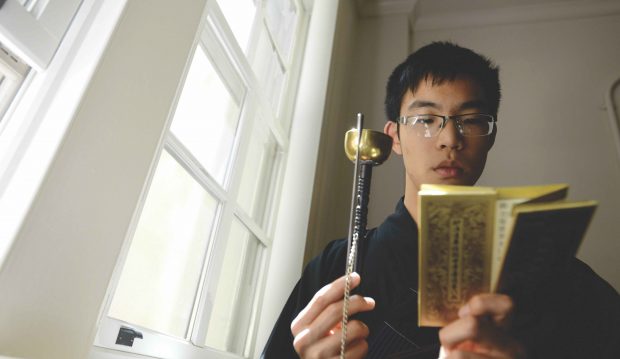
Andrew Nguy ’19
“It’s a story that a lot of young Buddhists share. Someone dies, and because of the funeral rites, there is some sort of religion involved, and Buddhism happened to be the one for my grandma, so her funeral was really where things started for me, and it’s just grown from there.
“My daily routine has shifted over the course of the school year. The first semester I was pretty good, waking up early. I have an 8 a.m. class almost every day, so I would wake up at 6, brush my teeth, get some homework done if I needed to and spend about a half hour chanting the Universal Gate chapter of the Lotus Sutra for its emphasis on compassion and meditating before anybody else was up. Since then, it’s gone from a morning routine to more of a nightly routine. Since now I have more time in the evening, I started doing that—same routine, half an hour or so, but more in the evening than in the morning. And then of course, these past few weeks, with finals coming up, it’s gone from half an hour to 15 minutes to 10 minutes, to ‘Oops, I forgot today. I’ll try again tomorrow.’ That’s the life of a student.
“You won’t see me meditating in class, but the things in Buddhism show up almost everywhere in life, and I can spot it now after being Buddhist for a few years. I can see how conflicts come about. And how, if I get angry as a response to that conflict, it usually only gets worse from there. Realizing that and being able to stop myself before impulse takes over, I’m able to keep the situation a bit calmer and more conducive to actually resolving an issue.
“Being a student, it’s hard to have time in general, and time for what most people think is sitting around doing nothing is even harder. So my compromise is I do a lot of walking meditation when I’m on my way to class and in between classes. Instead of walking to class with a friend, having a nice chat about who-knows-what, I can walk and just kind of focus on my breath, focus on my footsteps as I’m walking, and just be mindful about what I’m doing. Another method I use is recitation. I use the name of Avalokite´svara Bodhisattva, the main figure in the Universal Gate chapter, as a point of focus. Concentrating on the syllables of the name and the compassion it’s associated with, I can use it as my meditation anywhere, even when I’m waiting in line for lunch.
“The purpose of it is more to be able to observe and understand the mind—which might have something to do with my being a psych major—but understanding the mind in a different context. I think the benefits of meditation show up in a lot of ways. If you were to have met me four or five years ago, before I really learned much about Buddhism, I was really impulsive and—I’m not going to lie—I still am sometimes. But meditation has helped me recognize the patterns and my habits. When I’m about to make a rash decision, it kind of pulls me back and says, ‘Stop and think about that first.’”
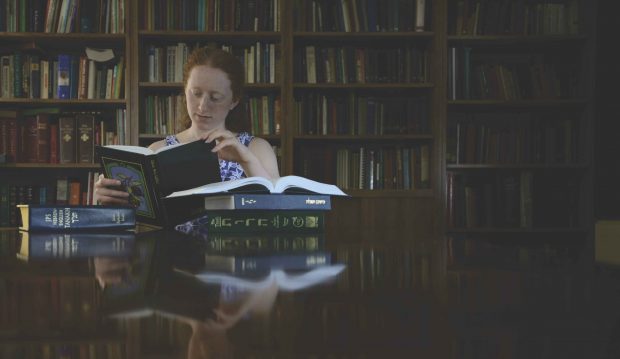
Ilana Cohen ’16
“This is not unique to Judaism, but the time and the cycle are very important. So for us, it’s Friday night through the day of Saturday and observing that as Shabbat in some way. Here, that has meant being at Hillel on Friday nights, pretty regularly. A lot of times, that experience would start for me at about 11 o’clock on Friday when we would pick up the food from the dining halls and bring it over here to the McAlister Center and start cooking for the people who were coming to Shabbat dinner that night. Then we would get the space ready, and often—not every week, but often—I would lead services here in the library. That, for me, was a process of recapturing the Shabbat experience of my synagogue, growing up. Then we would all do dinner together.
“There are many prayers in Judaism that you can’t say unless you have a minyan of people. You wouldn’t say them unless you have that quorum, and there are lots of different reasons why that might be true, but my favorite that I’ve heard is that it’s not that you need 10 voices so that God can hear you—it’s because then somebody does hear you. There are people around you to make the prayer work, because now there are people who know that you’ve said that prayer and support you in doing that. So any time that I’m questioning—well, why am I doing this in a language I don’t really understand?—I know that this is the way to build a community that will be supportive to me.
“So community is very important to me, and the music is also very important, and the fact that it is my history, and it almost wasn’t. My grandmother came out of Austria on the Kindertransport. It’s never why I’ve started a new Jewish practice, but there are always moments where I think, ‘This is just my family’s history.’
“Personally, I almost never use the word ‘faith.’ So when I was thinking about coming here, I was thinking, ‘How am I going to answer these questions?’ I see how it’s a word that broadly allows for anybody’s religious experience, but I think of its association with ‘blind faith,’ and believing or trusting. For me, the religious experience is much more about practice and about learning. Most importantly, from the time I was very little, any participation in Jewish practice was my choice.
Ideologically, nothing I’ve learned or been taught in college is in conflict with my understanding of Judaism, and I didn’t expect it to be. I took a Religious Studies class my first semester, and that was the opposite of a conflict. And I would have done more, but I think I prefer studying it in the religious context, and knowing that I don’t have to get that while I’m in college, because Torah study will be as large a part of my future participation in the Jewish community as religious services.”
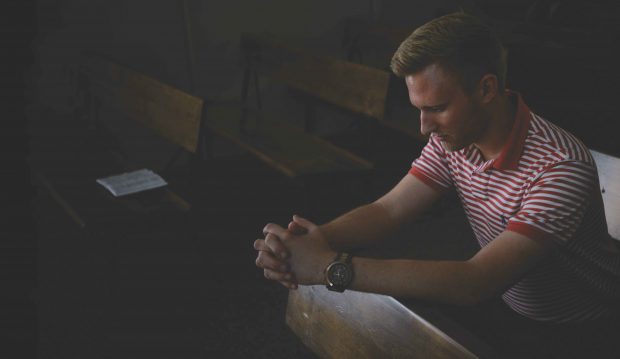
Jordan Shaheen ’17
“I’m a big proponent of the war-room theory, which is that you fight all your battles in prayer, not in person. So I kind of get everything I need to get out in the morning in prayer, and then I know I’ve got something there that will get me through the day, until I recharge the next morning.
“I had a church back home that I still go to occasionally. I knew I wanted faith in my life and I wanted a relationship with God, but I’d never really figured out a way to do it. I struggled for years, always reading, always learning about it. There were times when I had atheistic tendencies, times when I wanted to be all-in but didn’t know how to be all-in. Here at school, I finally found a place in the church and was able to really blossom in that role. Now I’m looking at going to divinity school and getting a doctorate of theology and going into the ministry. The thing I love about the Presbyterian Church most is that most ministers have doctorates, so it’s more of an academic denomination, which I’ve come to really appreciate.
“I don’t go out evangelizing—I don’t talk about it at all unless people come to me with questions. It’s something that’s very important to me, and I’m more than happy to talk about it, but I think it’s one of those things where people have to come to you with questions, or else it’s not going to be a meaningful conversation. So I kind of keep to myself, but I think there are a lot more people here for whom religion is important than will say so. It’s kind of an underground group. I know that sounds funny, but there are a lot of people here who are very religious—and not just people who will admit they’re Christian or Muslim or Jewish or Buddhist or whatever, but people to whom it’s very important but who don’t talk about it much. So you just have to find a way to reach out to those people and you’ll find a pretty cool community that you didn’t know was there.
“I’ve never found that my religion clashes with my work here. A lot of what I do in my major is investigating the early forms of Abrahamic texts, looking at the Socratic traditions and the pagan traditions and their influence or lack thereof on the blossoming of Abrahamic traditions throughout the Mediterranean. So a lot of the texts I get to read are foundational Christian texts, foundational Hebrew texts, foundational Islamic texts. And I get a really good sense of how that all plays together. Are there questions that arise, or inconsistencies that I notice and look into? Absolutely. But as Reverend Tharpe, who used to be the Protestant chaplain here, always says, ‘Any true Christian is agnostic three days a week.’ If you’re not questioning, you’re not learning and growing.”
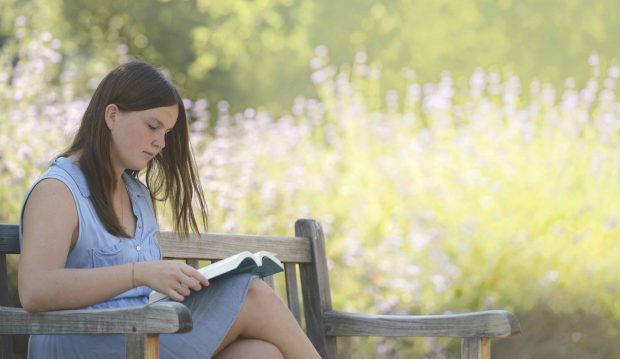
Molly Keller ’19
“I was raised Catholic, baptized, had my first communion, and went to an Episcopalian school from age 3 through fifth grade. Then I transferred to a very liberal private school where my friends were mostly Jewish. But even when I was going to church and Sunday school and at Episcopalian school and being taught religious knowledge, I never felt that invested in it. I remember in fourth grade we had to draw a picture of God, and I was very stubborn, so my compromise with the teacher was drawing a church with little squiggly lines around the steeple to represent a spirit. That was at age 9.
“I didn’t really think about religion very much in high school. It just wasn’t very relevant to my life. But interestingly enough, since coming to college, unexpectedly, I’ve been exposed to a lot of things that have forced me to reconsider. I definitely am not a devout Christian now or anything like that, but for example, my ID1 class was Cult and Culture with Professor Jordan Kirk, and a lot of the questions we focused on were around the manifestation of a God. And I think one of the things that really changed things for me was—we were reading Stories from Jonestown, and there was a passage about how, for some people, God can just be a warm meal and a job or a roof over their heads.
“And so, shifting from God as this man up in the sky to thinking of it as a word that fills in for certain significances—that kind of changed things for me. And then, I’ve been in Religious Ethics class with Professor Oona Eisenstadt, so being exposed to that, and the way different people have their own Tao in their lives, has changed my thinking.
“Religious Ethics, as she presents it to us, is a class that deals with how to live a good life and how different religions and different thinkers grapple with that question. So actually, a lot of the philosophies that came out of that class—whether they be from religious texts or not—kind of helped me think about how I live my life and how I interact with others. I really liked the Bhagavad-Gita but I also really liked Emmanuel Levinas and the way he talked about our intrinsic obligation to the “Other.” And I think that you see that in religion, but it doesn’t necessarily have to go hand in hand. So there are bits and pieces of philosophy that I use to guide my moral and ethical life.
“Again, I’m not a devout anything, and I don’t know if I believe in a God or many gods, but I’m a little more open to the notion that there may be something out there worth believing in. I just haven’t totally figured out what. But I’m not necessarily looking for anything. When religion was a big part of my life, I just sort of took it as it was. Since it hasn’t been a part of my life, I haven’t felt that anything was missing. But I’m open to things that come my way.”
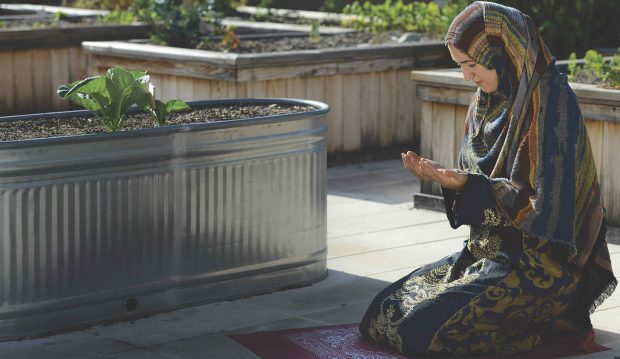
Vian Zada ’16
“I go up on the roof of Pomona Hall often. Being in this quiet place—surrounded by birds and looking up at the clouds—reminds me of creation. It’s a really nice way to clear my mind and remind myself of what matters to me. That’s what praying does for me. It’s really therapeutic because it dissolves whatever stresses I’m going through. It feels purifying. This may sound cheesy, but part of my faith is just looking at all the marvels around me. My love for life and science and how I see that every day just reinforces my wonder for a greater being.
“I grew up with strict but caring parents who tried to maintain the balance between their culture and sending their kids to American schools. I had a lot of rules at home. So being separated from my parents, it’s been interesting to see how, in my lifestyle, I go about following the tenets of my religion without my parents watching me. No one tells me to pray. My parents are never there when I’m at a party and abstain from drinking. Those are things I do for myself.
“I’m not able to pray five times a day, but I do think about God every day. I do fast, for a lot of other reasons besides the reasons that are given to me. I trust my own judgment, and I make my own decisions. It’s not like I look to the Quran as the only source of how to live my life. I’m in a religious studies class right now called Nourishing Life, and we look at a lot of ancient Chinese texts and a lot of Buddhist and Taoist primary sources, and I find myself agreeing with a lot of what I read. I just believe in taking what appeals to you from different religions and different ideas.
“In Islam there’s a lot of emphasis on being compassionate and respectful toward all others—toward life itself. I think I developed my sense of compassion going to Arabic school every Saturday and learning from my mom—just the Golden Rule, basically. I think all religions are beautiful. Religion in itself is, I think, a wonderful tool for helping one shape one’s moral compass.
“My religion also encourages education. Educating yourself is a duty that you’re supposed to carry throughout your whole life. It’s nice to know that I’m supposed to be here.”
—Photos by Carrie Rosema